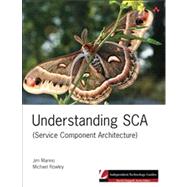
Note: Supplemental materials are not guaranteed with Rental or Used book purchases.
Purchase Benefits
What is included with this book?
Jim Marino, Ph.D., is Principal at Metaform Systems, where he provides strategic planning, architecture assistance, and training to clients worldwide. Jim is also one of the architects of the Fabric3 SCA runtime. Prior to joining Metaform Systems, Jim was Director of Technology at BEA Systems, where he was involved with the development of Service Component Architecture from its inception.
Michael Rowley, Ph.D., is the CTO of Active Endpoints, Inc. He has been involved in the development of SCA from early in its development and has contributed to 12 of the 15 SCA specifications that were published as part of the Open Service- Oriented Architecture (OSOA) collaboration. He was also an original member of the Open Component Service Architecture (OpenCSA) steering committee, which is the OASIS steering committee that oversees the work of the various SCA technical committees. Before joining Active Endpoints, he was a Director of Technology at BEA Systems where, in addition to working on SCA, he also helped develop the BPELJ extension to BPEL and was involved in the early development of BEA’s event processing and service bus products. Michael received his Ph.D. in computer science from UCLA in 1994.
| Preface | p. xix |
| Introducing SCA | p. 1 |
| Assembling and Deploying a Composite | p. 41 |
| Service-Based Development Using Java | p. 69 |
| Conversational Interactions Using Java | p. 109 |
| Composition | p. 131 |
| Policy | p. 167 |
| Wires | p. 189 |
| Bindings | p. 203 |
| The Domain | p. 231 |
| Service-Based Development Using BPEL | p. 267 |
| Persistence | p. 285 |
| The Presentation Tier | p. 311 |
| Index | p. 325 |
| Table of Contents provided by Publisher. All Rights Reserved. |
The New copy of this book will include any supplemental materials advertised. Please check the title of the book to determine if it should include any access cards, study guides, lab manuals, CDs, etc.
The Used, Rental and eBook copies of this book are not guaranteed to include any supplemental materials. Typically, only the book itself is included. This is true even if the title states it includes any access cards, study guides, lab manuals, CDs, etc.